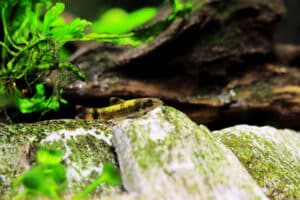The water in your tank should be colorless and transparent, but occasionally, it might turn cloudy, or you might see some colors in the water. So, naturally, you want to understand the reason and how to fix this problem. So, why is fish water pink?
Several reasons might change the color of tank water from clear to pink. The color might come from newly added gravel or decorations.
If the pH level in the tank changes, it might affect some of the old painted objects and cause the paint to dissolve in the water. Tank water can also turn pink due to bacterial growth inside the tank, or the color could come from the bloodworms you’re feeding your pet fish.
Is Pink Water Harmful to My Fish?
Normally, the water in your fish tank should remain clear and colorless, and if the filter isn’t working properly, it will get cloudy due to the waste buildup. But clear water with some colored hues like pink or brown can be a big concern for any pet fish owner.
Water can become pink for several reasons, and it might be harmful. This is why you need to find the root of the problem and evaluate it.
Why Is My Fish Water Pink?
After adding the water and operating the filter, you’d be surprised to see that the water is turning pinkish or reddish. This can happen for several reasons.
1. New or Old Ornaments
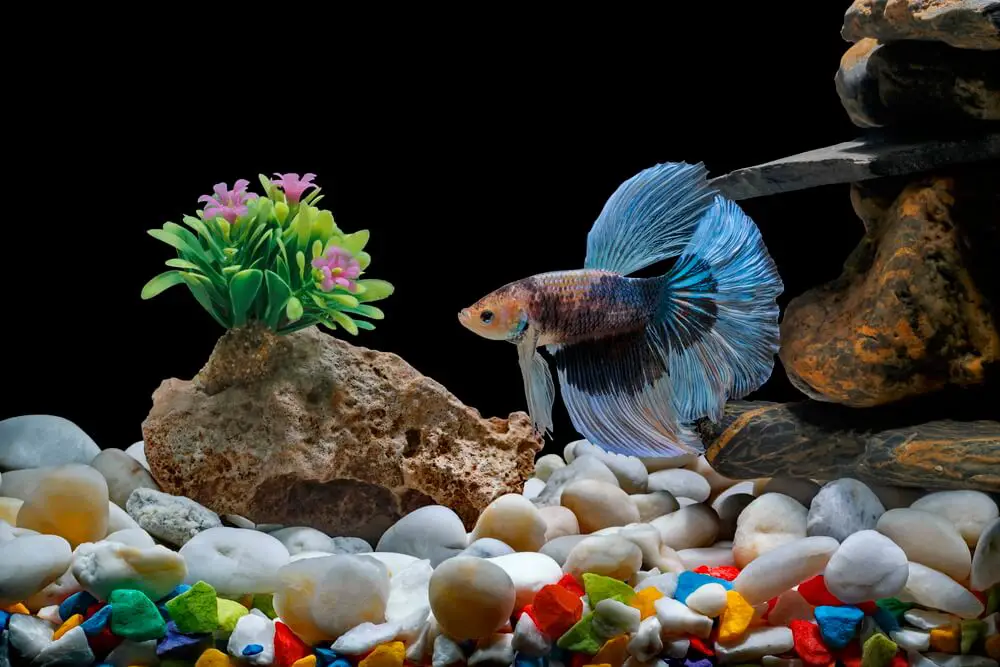
Adding colored gravel or ornaments to your fish tank is a matter of personal choice. You might not be able to notice the tiny amount of paint that runs when you wash colored gravel and decorations.
However, this little amount can be quite toxic to fish. This is why it’s recommended to wash and rinse these colorful objects several times and even boil them if necessary.
2. Change in Water Parameters
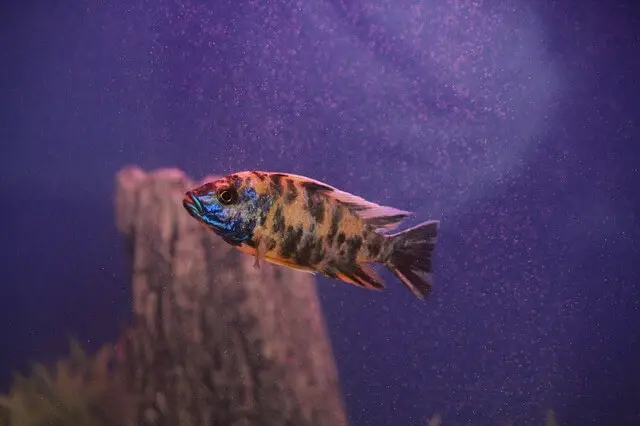
The water tank’s pH and ammonia levels should remain within control, as any change will harm and even kill your fish.
At the same time, all the colored objects that you use for decorations in your aquarium are covered by coats of paint, and these chemical changes can cause the paint to dissolve in the water.
A change in the ammonia levels will stress your fish and cause damage to the internal organs, as any levels above 0.0 ppm are considered dangerous.
So, if you notice a difference in the water’s color, you need to check the water parameters to make sure that your fish and aquatic animals are safe.
3. Bacterial Bloom
Bacterial bloom happens when the number of bacteria rapidly and significantly increases inside a fish tank.
Although the bacteria aren’t visible, you can actually see these tiny organisms suspended in the tank or growing on its walls when a bacterial bloom happens. Sometimes they might change the water’s color or make it look cloudy.
A well-maintained tank has a healthy level of bacterial growth as these microorganisms help break down the organic matter in the tank to keep it clean and healthy for your fish or any aquatic animals you’re keeping.
However, there are several factors that can make bacterial growth go out of control. These include overfeeding the fish, not cleaning the remains of dead fish or plant matter, and having a dysfunctional filter that doesn’t remove the impurities the way it should.
Bacterial bloom is more common in new water tanks, where the water cycle hasn’t yet been established. But it can also happen in a well-established tank if there’s an increase in the levels of phosphates and nitrates due to the presence of dead organic matter.
4. Red Algae
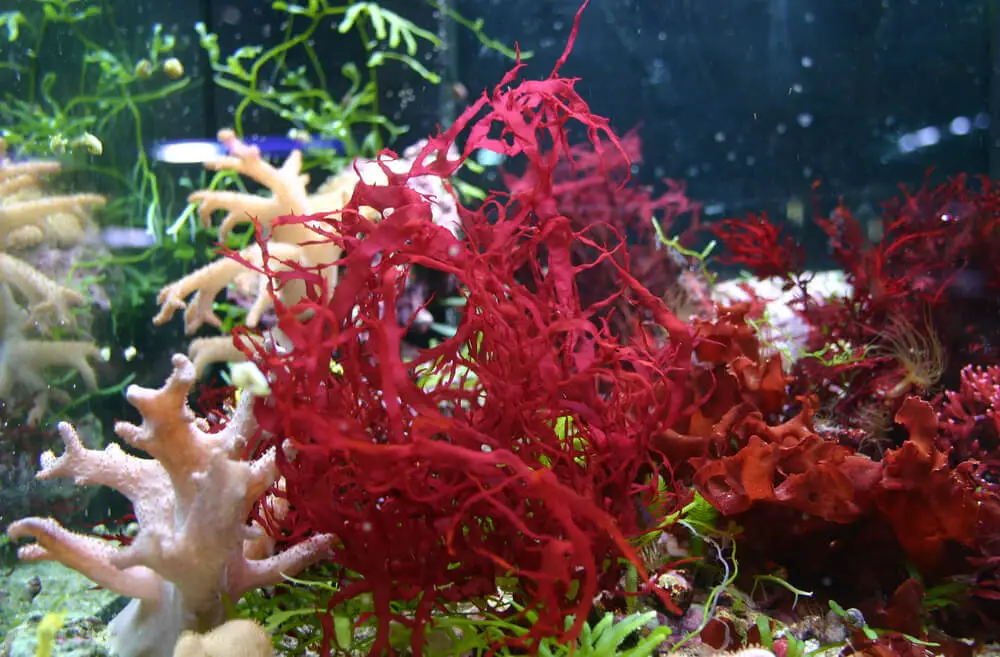
Red algae are more likely to grow in saltwater aquariums than in freshwater aquariums.
There are several reasons why your tank might get infested with red slime algae, but the main reasons are infrequent water changes, inappropriate lighting, and high levels of nitrates. When these reasons combine, you’re likely to deal with an unexpected growth of red algae.
In the beginning, the algae will grow in small patches that you might not be able to notice. However, the patches will grow in size, eventually changing the color of the water.
5. Food
Another factor that might turn your fish water pink is related to the food you’re offering your pet fish and other aquatic animals in the tank.
Bloodworms are the perfect bait for fish, and your aquatic pets will love them. They’re rich in proteins and other nutrients that fish need to stay healthy.
These worms are served live or frozen, so when they’re put in the fish tank, they might change the water’s color to pink. While putting the worms into the tank, you might also pour some of the water that comes with them, which might be red or pink.
6. Unclean Water
In some cases, you might be the reason why the fish water is turning pink. For example, if you’re using a bucket to fill the fish tank, but the same bucket is used to clean the house, some cleaning compounds might still be left in the bucket.
You won’t be able to see these tiny particles, but they can change the look of the tank and change the water’s color. Unfortunately, these chemicals might also be toxic to your fish and any aquatic animals in the tank.
Parts of dead or decaying fish won’t look pink because of the blood. You might see some pieces of white flesh floating in the tank if a big fish has eaten one of the smaller ones because fish don’t have a strong blood supply.
Read Also: Can You Use Fish Tank Water For Plants?
7. Wrong Chemicals
Adding a water conditioner is essential to keep your pet fish healthy. This is a treatment that eliminates the chlorine in tap water to make it safe for fish and aquatic animals.
Water conditioners contain sodium thiosulfate that transforms chlorine into chloride, which is less harmful to fish. Some treatments contain sulfonates, and they’re able to remove chlorine and ammonia from the tank.
If you use too much of the water conditioner and it happens to be pinkish or reddish, it might turn the water pink.
How to Fix the Issue of Pink-Colored Fish Water?
The pink water in your fish tank might happen because of one or several reasons. This is why you need to try one solution at a time to fix the problem.
- If you notice that you’re seeing pink water after adding new ornaments, then this is the change you have to deal with.
First, you need to make sure that you’re buying them from a reliable source to guarantee that the paint and chemicals used in their manufacturing process are safe for the fish. Second, you need to wash them properly and even boil them to remove any paint residue that might later dissolve into the water.
- High levels of ammonia in the fish tank will affect your fish’s appetite, and you’ll see that they’re moving slowly and gasping at the surface of the water.
After measuring the ammonia levels, you can do partial weekly water changes, changing only 30% of the water at a time. Make sure to add dechlorinated water and clean any organic matter that might be sitting at the bottom of the tank.
- A bacterial bloom might happen in a new tank, and it will resolve after the nitrogen cycle has completed and the tank has stabilized. If you notice a bloom in an established tank, you should pay attention to partial regular water changes and clean the tank frequently.
- If the pink hue is caused by red algae growth, you need to make sure that you’re using aquarium-specific lights and turn them on for only 8 or 9 hours per day.
Use a high-quality sea salt mix to avoid messing up the phosphate and nitrate levels in the water. Regular maintenance by changing filtering materials and cleaning any waste and excess food will also prevent the growth of algae.
- Adding too much food to the tank might change the water’s color. This is why you shouldn’t overfeed your fish or pour the water that comes with the bloodworms into the tank.
- It’s important to keep all your pet fish essentials in a safe, dry place and use clean water to remove any dust or debris. Avoid using the same bucket that you use to clean around the house as the chemicals will be toxic to your fish and might change the water’s color.
- Always stick to the recommended amount of water conditioning agents and other additives to create the safest environment for your pet fish. You’ll also avoid changing the water’s color.
Final Thoughts
Although the water in your fish tank should be clear and colorless, it might turn pink if you’re adding gravel or decorations that you haven’t properly rinsed.
There are other factors that might change the water tank to pink, including the growth of bacteria, excess food, or using too much water conditioner.
Hi! I’m Praveen Ghoshal, the founder of eFishkeeping.com. Inspired by my Dad, I got interested in fishkeeping when I was a kid. Since then, I have been involved with this hobby. Currently, I have 3 fish tanks at our home, and I enjoy this hobby with my full family. Read more about me here.

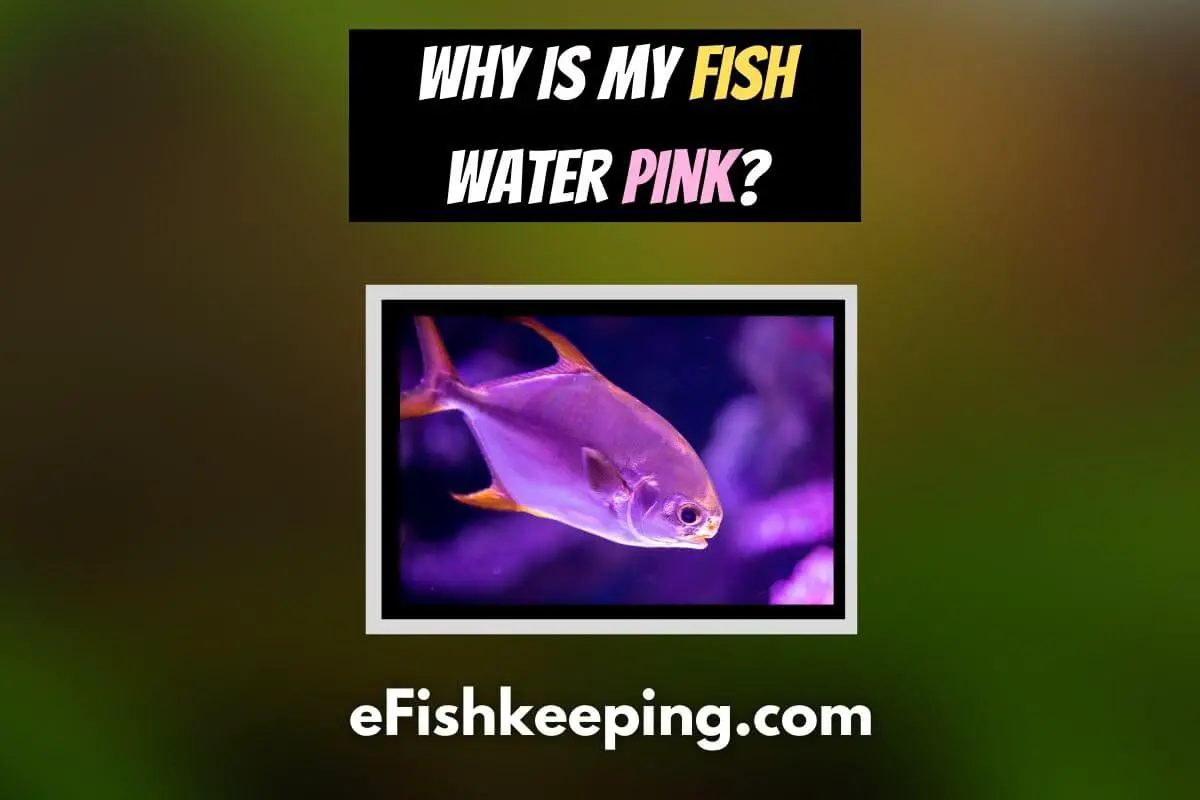


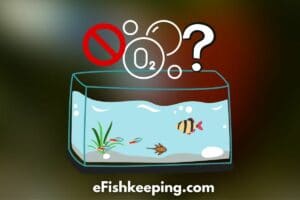

![Do Neon Tetras Die Easily? [Here’s The Truth!] do-neon-tetras-die-easily](https://efishkeeping.com/wp-content/uploads/2023/03/do-neon-tetras-die-easily-300x200.jpg)
